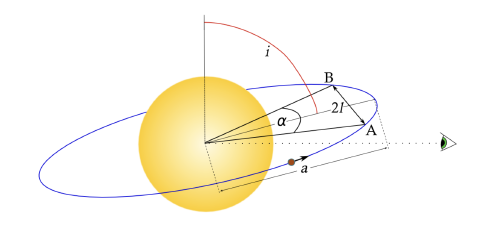PX158 - H4 - exoplanets
introduction
- planets that orbits a star other than the sun
(nuclear fission begins in core for larger masses) - difficult to detect due to:
- faintness: weak emission and reflection
- very small angular separation from the brighter host star
methods of detection
radial velocity (RV)
-
a star will have a doppler shift if it is orbited by an exoplanet
-
eg:
-
in
, was discovered in a very short period orbit: 'hot jupiter' with - '
' represents an exoplanet, ' ' represents a binary companion
- '
-
the earth will only induce a RV signal on the sun at a level oh
-
spectrographs had precision at
-
best spectrograph: ESPRESSO on VLT
-
a problem is that the surface of stars are active and dynamic, causing variations in RV measurements
-
currently,
exoplanets have ben discovered via the RV method, all have mass ( , minimum mass)
transit method

- depth of the transit:
-
for jupiter:
-
WASP project found
'hot jupiters' using transit method -
planets must be close to
-
the radius is learned, and if RV is obtained, the mass is learned, which can be used to learn the bulk density
-
currently,
exoplanets have been discovered by the transit method. some do not have RV measurement -
assuming a circular orbit,
is the duration of transit, is the angle subtended at the centre:
micro-lensing

where,
, , - extra lensing due to exoplanet causes a spike in flux-time plot (
) - the amplitude of the spike give information on the mass of the exoplanet

astrometry
- a star will move in a circular orbit due to an exoplanet - parallax observed:
- eg:
- gaia can detect planets this way, but needs to way for ~full period, ie:
for a jupiter type planet
direct imaging
-
need to observe very nearby and young stars, ie:
-
adaptive optics, large telescopes, and space telescopes are used
-
currently,
known exoplanets (confirmed) -
radius and period of planets are biased by detection methods